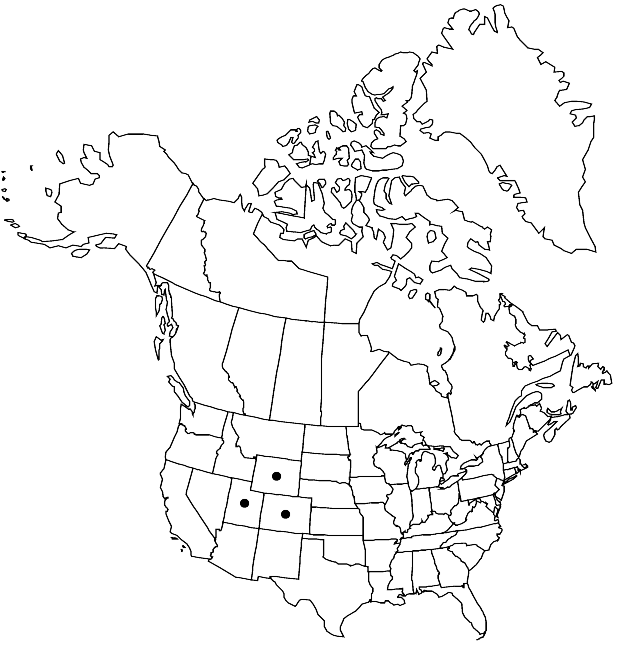Physaria parvula
Novon 12: 326. 2002.
Perennials; caudex (buried), usually branched, sometimes simple, (cespitose); densely pubescent, trichomes (appressed), 4–7-rayed, rays distinct, furcate or bifurcate near base. Stems few to several from base, erect, (unbranched, slender), 0.3–1.5 (–3) dm. Basal leaves (tufted, erect); blade linear to very narrowly spatulate, 1–3 (–4) cm, margins entire (involute). Cauline leaves similar to basal. Racemes relatively dense. Fruiting pedicels (ascending, curved or sigmoid), 2–10 mm. Flowers: sepals (greenish yellow), elliptic, 3.5–7 mm; petals spatulate, 5–6 mm, (not clawed). Fruits (erect), ovoid (or longer than broad), usually inflated, 4–5 mm, (apex acute, slightly flattened); valves pubescent, trichomes appressed; ovules 4–8 per ovary; style 2–4 mm. Seeds flattened, (mucilaginous). 2n = 10, 20.
Phenology: Flowering May–Jul.
Habitat: Exposed windblown ridges, gravelly hills, open rocky knolls, gravelly hilltops, clay hillsides, granitic sand, reddish soil, sagebrush, mountain scrub, and pinyon-juniper areas
Elevation: 1800-2800 m
Distribution

Colo., Utah, Wyo.
Discussion
Selected References
None.
Lower Taxa
"not" is not a number. "elongated" is not a number."thick" is not a number."dm" is not declared as a valid unit of measurement for this property."dm" is not declared as a valid unit of measurement for this property.